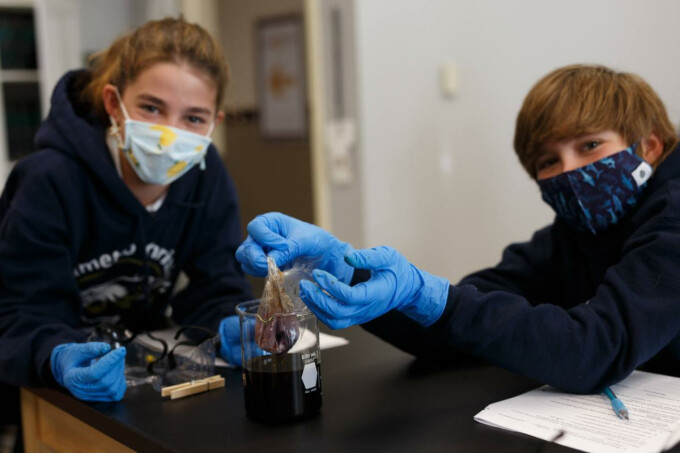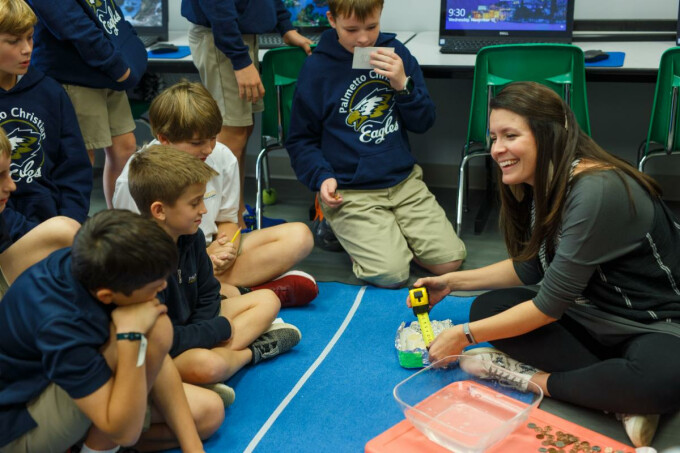Learning Diffusion: Concentration Required!

Kim Moser’s 7th grade science students recently learned about diffusion and how it relates to a semipermeable cell membrane through an exciting hands-on lab experiment. The question to be answered: How can diffusion be observed?
Students wasted no time in starting their investigation, beginning with constructing their lab. Partners worked together to fill a glass beaker with a water/iodine solution and prepared a baggie with a cornstarch and water mixture.
Back at their seats, they clipped the cornstarch mix bag to the side of the beaker, submerged it in the iodine solution, and sat back, pencils and lab packets in hand to wait for any change to occur in their materials.
After some time the students began to see their white cornstarch/water solution turn purple!
“Which substance has a greater concentration?” Moser asked.“How do we know which has a greater concentration?” and, “What is the evidence that the baggie is semipermeable?”
The students were able to conclude that the iodine diffused through the baggie. “It would be passive transport if it were a cell,” noted Parker Pinson.
What did the students think overall? “It’s interesting to see it change colors,” said Maggie Anderson. They also concluded that it is not a good idea to store iodine in a plastic bag!
Mrs. Moser sure knows how to turn learning about diffusion and transport through a cell membrane into a fun color-changing scientific experiment.

